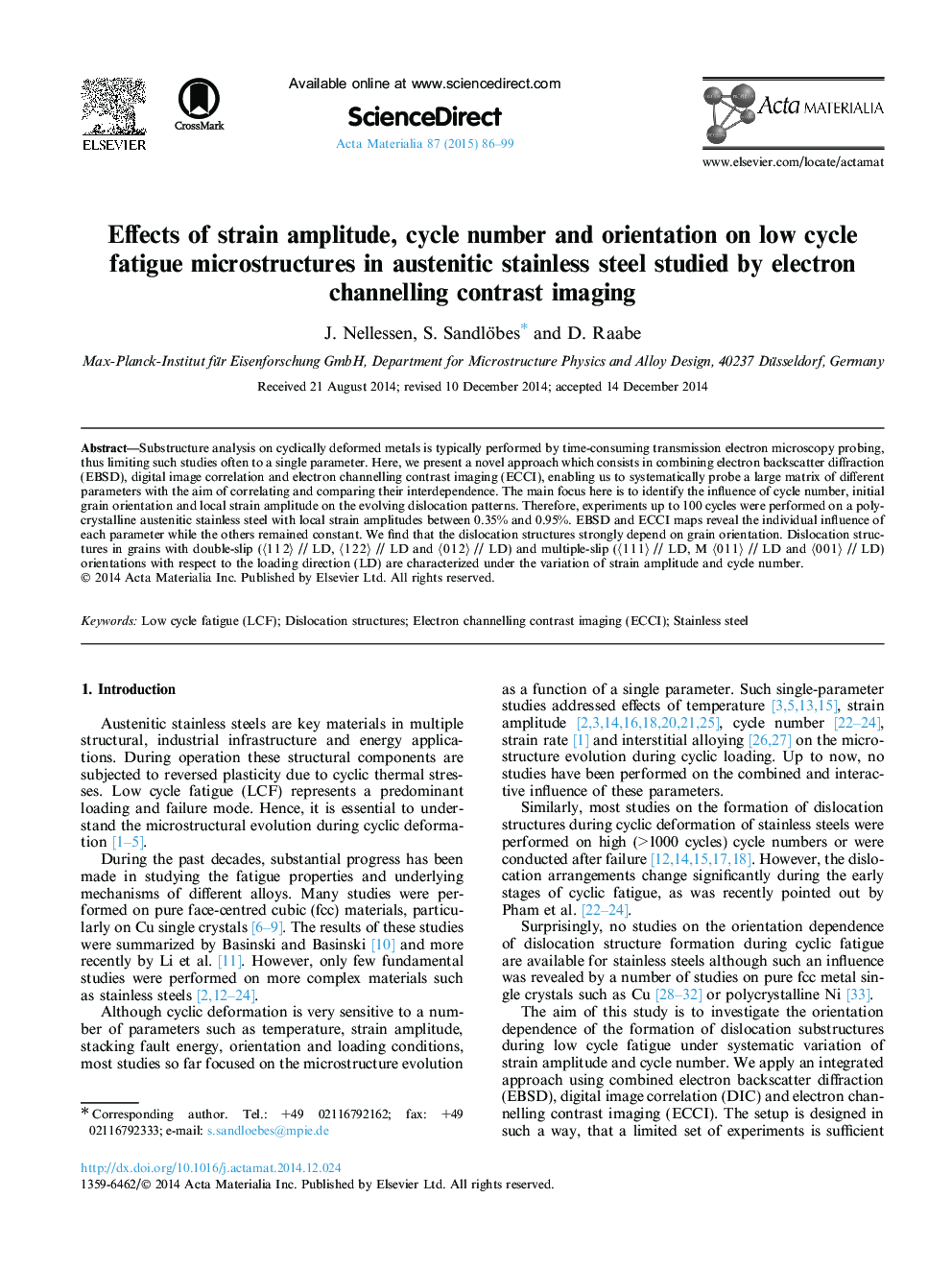| Article ID | Journal | Published Year | Pages | File Type |
|---|---|---|---|---|
| 7880565 | Acta Materialia | 2015 | 14 Pages |
Abstract
Substructure analysis on cyclically deformed metals is typically performed by time-consuming transmission electron microscopy probing, thus limiting such studies often to a single parameter. Here, we present a novel approach which consists in combining electron backscatter diffraction (EBSD), digital image correlation and electron channelling contrast imaging (ECCI), enabling us to systematically probe a large matrix of different parameters with the aim of correlating and comparing their interdependence. The main focus here is to identify the influence of cycle number, initial grain orientation and local strain amplitude on the evolving dislocation patterns. Therefore, experiments up to 100 cycles were performed on a polycrystalline austenitic stainless steel with local strain amplitudes between 0.35% and 0.95%. EBSD and ECCI maps reveal the individual influence of each parameter while the others remained constant. We find that the dislocation structures strongly depend on grain orientation. Dislocation structures in grains with double-slip (ã1Â 1Â 2ã // LD, ã1Â 2Â 2ã // LD and ã0Â 1Â 2ã // LD) and multiple-slip (ã1Â 1Â 1ã // LD, M ã0Â 1Â 1ã // LD and ã0Â 0Â 1ã // LD) orientations with respect to the loading direction (LD) are characterized under the variation of strain amplitude and cycle number.
Related Topics
Physical Sciences and Engineering
Materials Science
Ceramics and Composites
Authors
J. Nellessen, S. Sandlöbes, D. Raabe,
